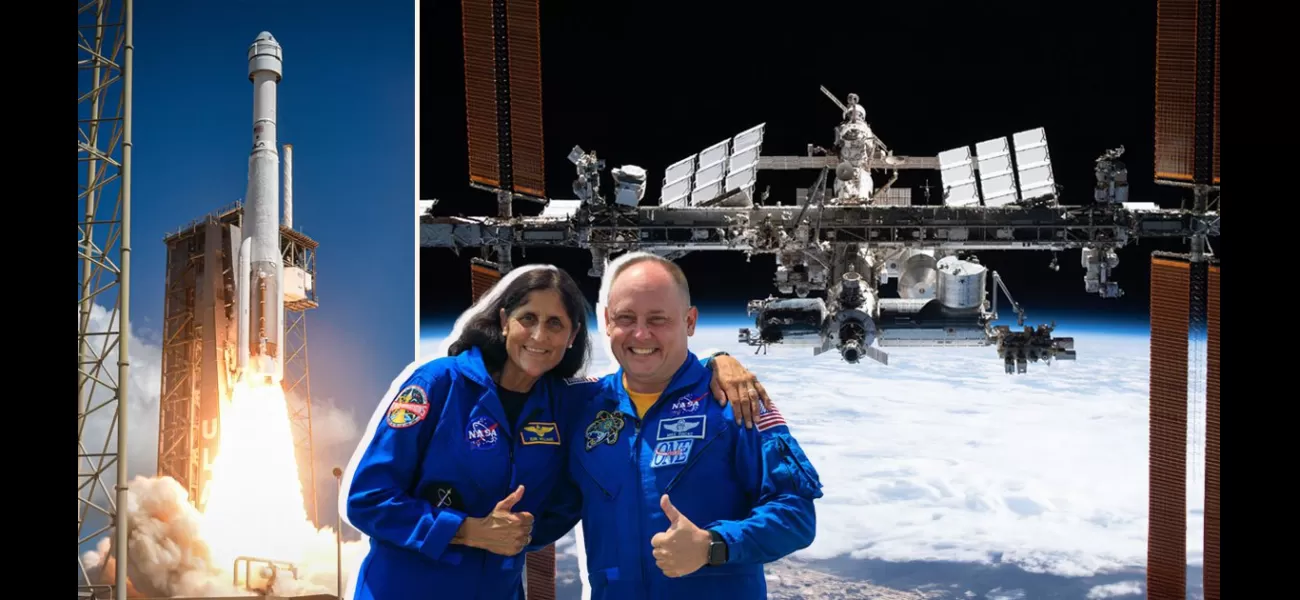Astronauts stuck on ISS must be rescued soon.
They were supposed to come back by June 14.
June 25th 2024.

Two brave astronauts, Barry ‘Butch’ Wilmore and Sunita ‘Suni’ Williams, embarked on an incredible journey to the International Space Station aboard Boeing's impressive Starliner spacecraft. It was an exciting moment for all, as the launch had been delayed for years due to various setbacks.
But on June 5, the spacecraft finally took off, despite concerns about a helium leak that had been discovered. And with its successful launch, it carried with it two experienced NASA astronauts, Barry ‘Butch’ Wilmore and Sunita ‘Suni’ Williams, into orbit.
Originally, the mission was expected to last eight days, but almost three weeks have passed since then, and the duo is still on the space station. The reason? Multiple helium leaks, malfunctioning thrusters, and a faulty propellant valve have caused complications, resulting in a race against time for the team in Houston to fix the craft.
Naturally, everyone is curious about when the astronauts will return to Earth. NASA has rescheduled their return journey three times already, with July 6 being the current target. However, there is no official scheduled return, and the team cannot wait indefinitely.
According to Steve Stich, NASA's commercial crew manager, the Starliner can remain docked at the ISS for up to 45 days, as the Harmony module it is attached to has limited fuel. This means that the latest date for their return would be July 21, as the craft arrived at the ISS on June 6, a day after lift-off. However, in case of any additional problems that cannot be fixed in time, the spacecraft could potentially stay docked for up to 72 days, extending their stay until August 17.
One of the main issues with the Starliner capsule is its propulsion system. This system is crucial for backing the capsule away from the ISS and positioning it for re-entry into Earth's atmosphere. Unfortunately, many of the thrusters have overheated when fired, and the helium leaks, which are used to pressurize the thrusters, seem to be connected to their frequent usage.
Despite these challenges, Mr. Stich has expressed confidence in a safe return, as recent test-firings of the thrusters while the Starliner remains docked have been successful. However, the team is still conducting tests and reviews to ensure everything is in order.
The mission management team, consisting of NASA and Boeing personnel, is working tirelessly to analyze data on the propulsion issues. They are also running simulations in Houston and considering various solutions, such as updating the software or changing how the hardware is used.
Once NASA gives the go-ahead for their return, the Starliner's thrusters will be used to undock the capsule from the ISS and begin its journey home, which is expected to take around six hours. The spacecraft will gradually tighten its orbit before plunging into Earth's atmosphere for a safe landing, aided by parachutes and airbags, at a designated location in the southwestern United States.
Despite the challenges, the astronauts are not in any immediate danger. If necessary, the Starliner can still return them safely to Earth, acting as an escape pod in case of an emergency. However, if the craft is deemed incapable of a safe return, another option would be to send a SpaceX Crew Dragon capsule to pick them up. While this scenario is unlikely, it would undoubtedly be a source of embarrassment for Boeing.
In the end, the fate of the Starliner depends on various factors, including the severity of its technical issues. But for now, the team remains hopeful that everything will be resolved, and the astronauts will return home safely. After all, the last time a NASA astronaut needed an alternative ride home was in 2022, and that was due to a coolant leak. And even then, they were able to find a solution and extend the astronaut's mission, setting a record for the longest duration in space for an American. So, we can trust that the team will do everything in their power to ensure the safe return of our brave astronauts.
But on June 5, the spacecraft finally took off, despite concerns about a helium leak that had been discovered. And with its successful launch, it carried with it two experienced NASA astronauts, Barry ‘Butch’ Wilmore and Sunita ‘Suni’ Williams, into orbit.
Originally, the mission was expected to last eight days, but almost three weeks have passed since then, and the duo is still on the space station. The reason? Multiple helium leaks, malfunctioning thrusters, and a faulty propellant valve have caused complications, resulting in a race against time for the team in Houston to fix the craft.
Naturally, everyone is curious about when the astronauts will return to Earth. NASA has rescheduled their return journey three times already, with July 6 being the current target. However, there is no official scheduled return, and the team cannot wait indefinitely.
According to Steve Stich, NASA's commercial crew manager, the Starliner can remain docked at the ISS for up to 45 days, as the Harmony module it is attached to has limited fuel. This means that the latest date for their return would be July 21, as the craft arrived at the ISS on June 6, a day after lift-off. However, in case of any additional problems that cannot be fixed in time, the spacecraft could potentially stay docked for up to 72 days, extending their stay until August 17.
One of the main issues with the Starliner capsule is its propulsion system. This system is crucial for backing the capsule away from the ISS and positioning it for re-entry into Earth's atmosphere. Unfortunately, many of the thrusters have overheated when fired, and the helium leaks, which are used to pressurize the thrusters, seem to be connected to their frequent usage.
Despite these challenges, Mr. Stich has expressed confidence in a safe return, as recent test-firings of the thrusters while the Starliner remains docked have been successful. However, the team is still conducting tests and reviews to ensure everything is in order.
The mission management team, consisting of NASA and Boeing personnel, is working tirelessly to analyze data on the propulsion issues. They are also running simulations in Houston and considering various solutions, such as updating the software or changing how the hardware is used.
Once NASA gives the go-ahead for their return, the Starliner's thrusters will be used to undock the capsule from the ISS and begin its journey home, which is expected to take around six hours. The spacecraft will gradually tighten its orbit before plunging into Earth's atmosphere for a safe landing, aided by parachutes and airbags, at a designated location in the southwestern United States.
Despite the challenges, the astronauts are not in any immediate danger. If necessary, the Starliner can still return them safely to Earth, acting as an escape pod in case of an emergency. However, if the craft is deemed incapable of a safe return, another option would be to send a SpaceX Crew Dragon capsule to pick them up. While this scenario is unlikely, it would undoubtedly be a source of embarrassment for Boeing.
In the end, the fate of the Starliner depends on various factors, including the severity of its technical issues. But for now, the team remains hopeful that everything will be resolved, and the astronauts will return home safely. After all, the last time a NASA astronaut needed an alternative ride home was in 2022, and that was due to a coolant leak. And even then, they were able to find a solution and extend the astronaut's mission, setting a record for the longest duration in space for an American. So, we can trust that the team will do everything in their power to ensure the safe return of our brave astronauts.
[This article has been trending online recently and has been generated with AI. Your feed is customized.]
[Generative AI is experimental.]
0
0
Submit Comment





